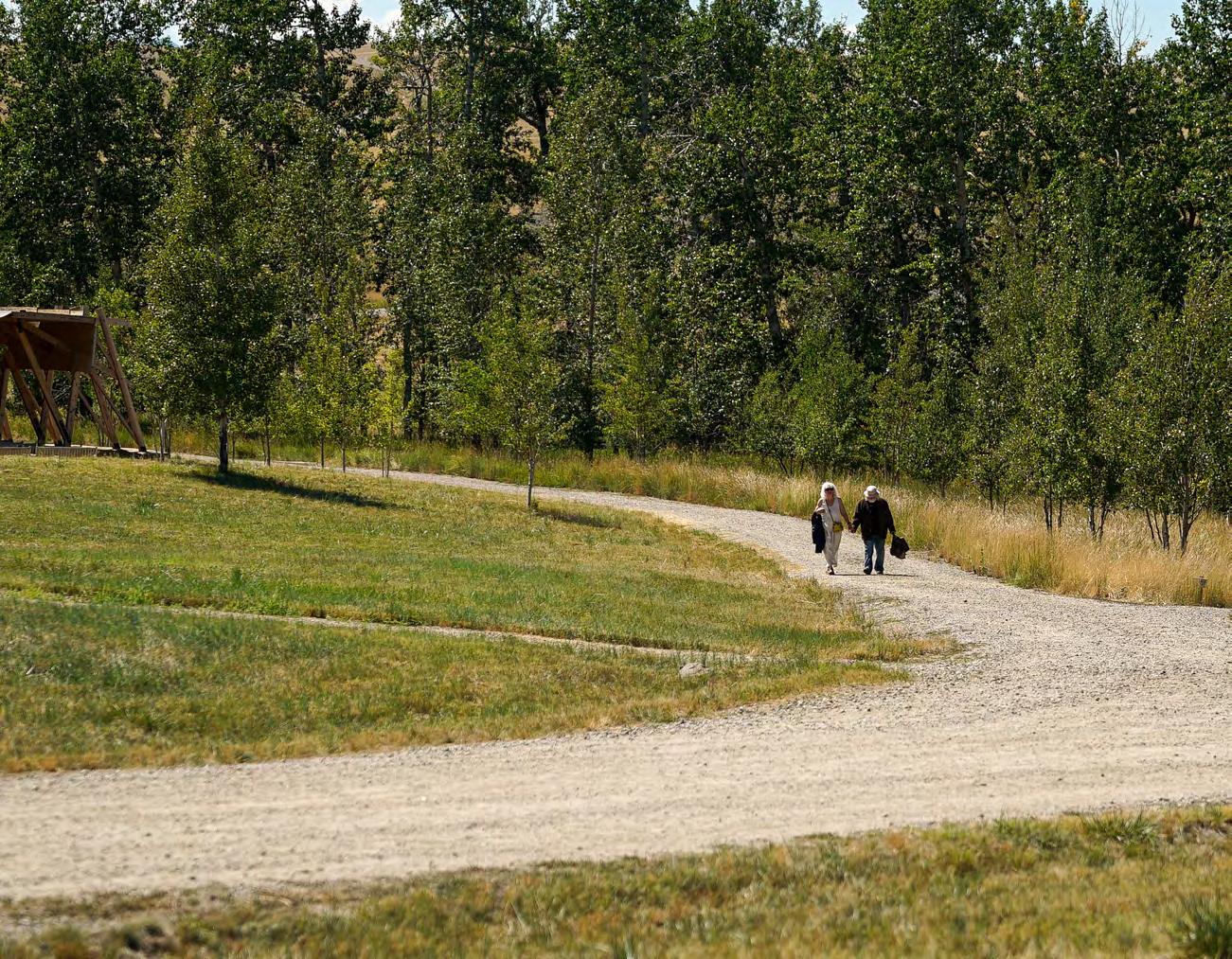A Concert for Cathy





Eversince Arup designed our bandstand, the Tiara, Cathy had wanted me to play the piano in it. So, nine years later, on August 19th of 2022, I finally got around to it. By that time, the Tiara Acoustic Shell was on the other side of the ranch, near the Olivier Music Barn. Many of these photos here, taken by Cathy, are from that concert. Some photos are from Will’s Shed, up against a reproduction of one of her paintings, Liquid Evening. The original painting is around 18 feet long.
Peter HalsteadFranz Schubert: Impromptu, Opus 90, No. 3, in G Flat Major, 1827.
Schubert died at 31. He never heard anyone else play almost anything he wrote. He played waltzes and dances at suburban parties. In his small apartment in Vienna, 1500 masterpieces were sitting unheard at his death. Nine symphonies, 600 songs, six masses, 20 sonatas, 50 choral works, 15 string quartets. He had only had one concert of his works in his lifetime, on the anniversary of Beethoven’s death. Eight months later Schubert himself would be dead.
It was Schubert more than Beethoven to whom Brahms aspired. Schubert’s songs, his lieder, were the melodic centers of the age. Brahms matched them with his infectious Liebeslieder Waltzes.
Claude Debussy: Jardins sous la Pluie (Gardens in the Rain), from Estampes, 1903.
I played this in our outdoor bandstand, the Tiara. Like a jeweled crown, the Tiara is made of only the top corners of a room, where 90% of the sound comes from. The rest of the structure is open, so people can see the trees, the fields, and the mountains, trees. The sound is like being inside a concert salon, but the feeling is more like camping. The Tiara was designed by Arup. It references both the painting by Gauguin, Tia Tiare (his mistress Tia with gardenias, called in Tahitian tiare), and our granddaughter, Tia. It is her musical crown. In the Tiara, the audience is surrounded by metaphors, by portals into other worlds: by Patrick Dougherty’s new sculpture, Cursive Takes a Holiday; by his older sculpture, Daydreams; by Ai Weiwei’s Iron Tree; by Francis Kéré’s Xylem, where he puts us, the visitors to his forest, into the middle of the trees, sitting on their trunks, underneath their canopies.


Trees take nutrients from the soil, and light from the sun, to grow their enormous trunks, which we use for building shelters and for meeting, both in Francis’s childhood village of Gando in Burkina Faso, and in Fishtail, Montana.
The land itself at Tippet Rise is a kind of tree. The magnetic rocks in the soil attract the electricity in the clouds to make a bridge between the earth and the sky, which we feel here more than most places, maybe because we don’t have many trees, and so the relationship of earth and sky is more visible.
All of us at Tippet Rise help our visitors to explore these metaphors, to appreciate the way the structures of landscape here open up a conduit between our reality and our aspirations. Electricity flows here between land and sky, and sparks our imagination. It creates a primal sense of mystery, of the stone age.
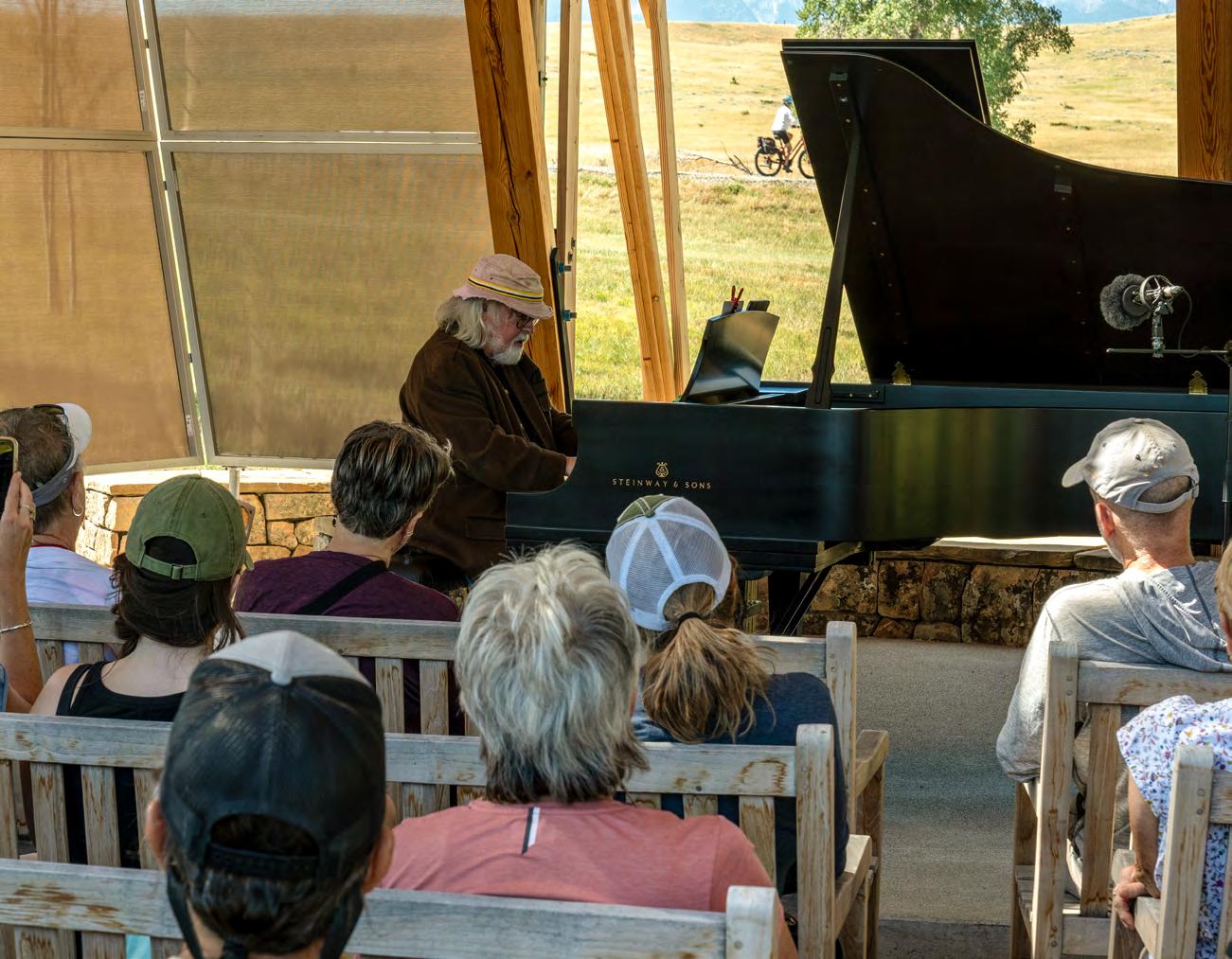 9
Peter Halstead
9
Peter Halstead
Music is another kind of metaphor, as is poetry.
I’d like to include a short poem that captures some of the different voices of rain that Debussy paints in his piece Gardens in the Rain. In both the poem and the piano piece, you can hear sun breaking through the drizzle, leaves shaking off their raindrops, the baubles of raindrops falling from the edges of leaves. The poem is by Richard Wilbur.
The sun was strong enough today
To climb the wall and loose the courtyard trees
(For two short hours, anyway)
From hardship of the January freeze. Their icy cerements decayed
To silken moistures, which began to slip
In glints and spangles down, and made On every twig a bauble at the tip.
No blossom, leaf, or basking fruit
Showed ever such pure passion for the sun
As these cold drops which knew no root Yet filled with light and swelled and one by one (or showered by a wingbeat, sown
From windbent branches in arpeggios)
Let go and took their shinings down And brought their brittle season to a close.
O false gemmation! Flashy fall!
The eye is pleased when nature stoops to art, Staging within a courtyard wall
Such twinkling scenes. But puzzling to the heart, This spring was neither fierce nor gay, This summary autumn fell without a tear: No tinkling music-box can play
The slow, deep-grounded masses of the year.

Debussy’s notes channel the motion of the rain in different ways:
1. Plonks of rain are depicted by one note at the end of each arpeggio. In the opening of the piece, arpeggios imitate rain falling by falling down. So in each four-note phrase, three give the downwards direction of the rain, and one is the actual drop. This remainds me of Wilbur’s line, sown from windbent branches in arpeggios.
2. Halfway through the piece you hear large bursts of rain, symbolized by note clusters. Wilbur summons up such bursts in his line: Which make on every twig a bauble at the tip.
3. These clustered bursts are followed by almost atonal expanding notes, which paint Wilbur’s line: yet filled with light and swelled one by one.
4. You can hear in arpeggios the way wind blows the rain sideways.
5. Then a fragile release of arpeggios imitates tiny raindrops with the sun shining through them. This passage is in the major key. Before the piece has been in the minor key. The major key conveys the sun.
6. At the end of the piece is an explosion of sunlight. This is like Wilbur’s line: [these colds drops…] Let go and took their shinings down.
7. After the next to last arpeggio explosion, there is a chord remaining: the dripping aftermath of the storm.
8. Three final drips are heard in the treble.
9. And then a final flurry of an arpeggio, not going down, but up, as a tree releases its drops suddenly. This to me calls up Wilbur’s last line: The slow, deep-grounded masses of the year. It is as if the poem parallels Debussy’s piece.
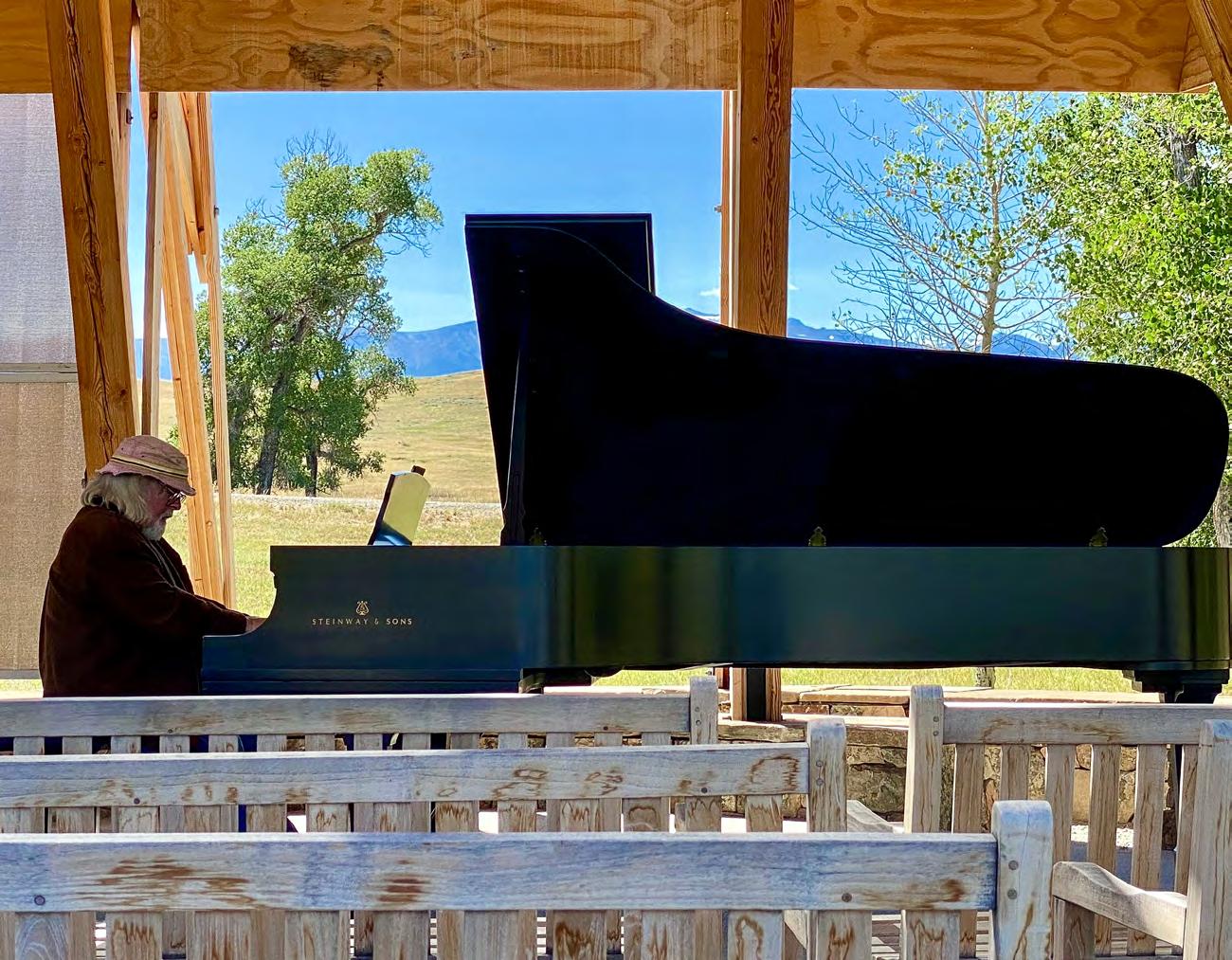
Rain is very moody and atmospheric, so Debussy puts his piece in the minor key. The entire work describes a garden in the town of Orbec in the north of France, in Normandy. Occasionally the sun breaks out through the rain, and the minor becomes major, as I’ve mentioned. This is a serious breakthrough. It’s a Russian trick, which Rachmaninoff always used, to alternate between major and minor.
Near the end, Debussy puts in the French children’s songs “Nous n’irons plus aux bois” (We promise we won’t go in the woods anymore) and “Dodo, l’enfant do” (Sleep, baby, sleep). This is when the melody of the rain breaks out into the sunlight, and is the glory of the piece. Like Mozart, Debussy didn’t write his best melodies; they were children’s songs.
Brahms uses a similar child’s lullaby as the basis for his great Intermezzo in E-flat.
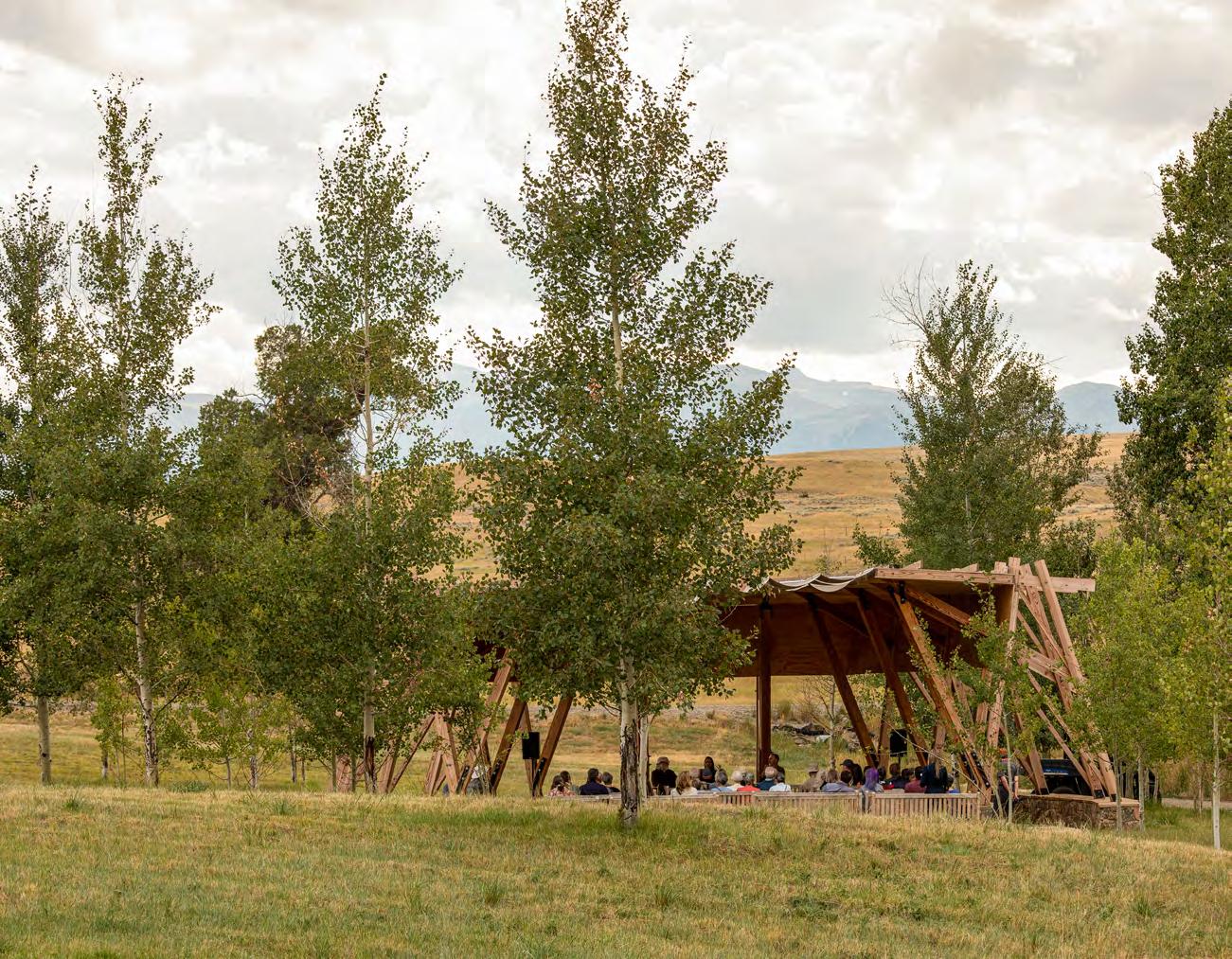

Debussy: Arabesque No. 1, L. 66. 1888.
Moorish arabesques are wooden or iron grills with designs of woven tendrils, vines, with the rampant foliage of palms, berries, and honeysuckle forming a kind of calligraphy of flowers, so that windows, even in cities, can have a template covering them which brings the viewer into a garden, into the countryside.
Here’s my poem, which conveys the mood of Debussy’s arabesque: ARABESQUE
Maybe just because their spindles burst Exuberantly from a spiral spine, overdone Moroccan lace dressing every line, immersed And honeycombed with Persian sun, Do these leaflets seem almost too Well-versed, minarets foreshadowed By each other’s thirst, streaked bamboo Where, beneath each node, The DNA of light weaves in And out like Escher stairs, Leaving labyrinths where thread had been, Layered by a hand that copies theirs. 19 Peter Halstead
Debussy: Doctor Gradus ad Parnassum (Steps to Heaven), from Children’s Corner, 1908.
Clementi and Czerny wrote studies for mastering the piano using this title. Beethoven, Mozart, and Haydn got their early training from a similar title by Johann Joseph Fux.
Debussy wrote this étude for his small daughter, Chouchou, when she was three. He imagines her playing the Czerny scales, then falling into a reverie. Those dreams help her emerge as a full-blown concert artist later in life. The last octave note is a kind of “Et voilà!”
He had great hopes that he would live on in Chouchou. However, she died of diphtheria a year after her father passed away, and is buried in his grave.
Valentyn Silvestrov: Four Pieces, Opus 302, 2020.
I Moderato
II Waltz of the Moment
III Serenade
IV Waltz of the Moment
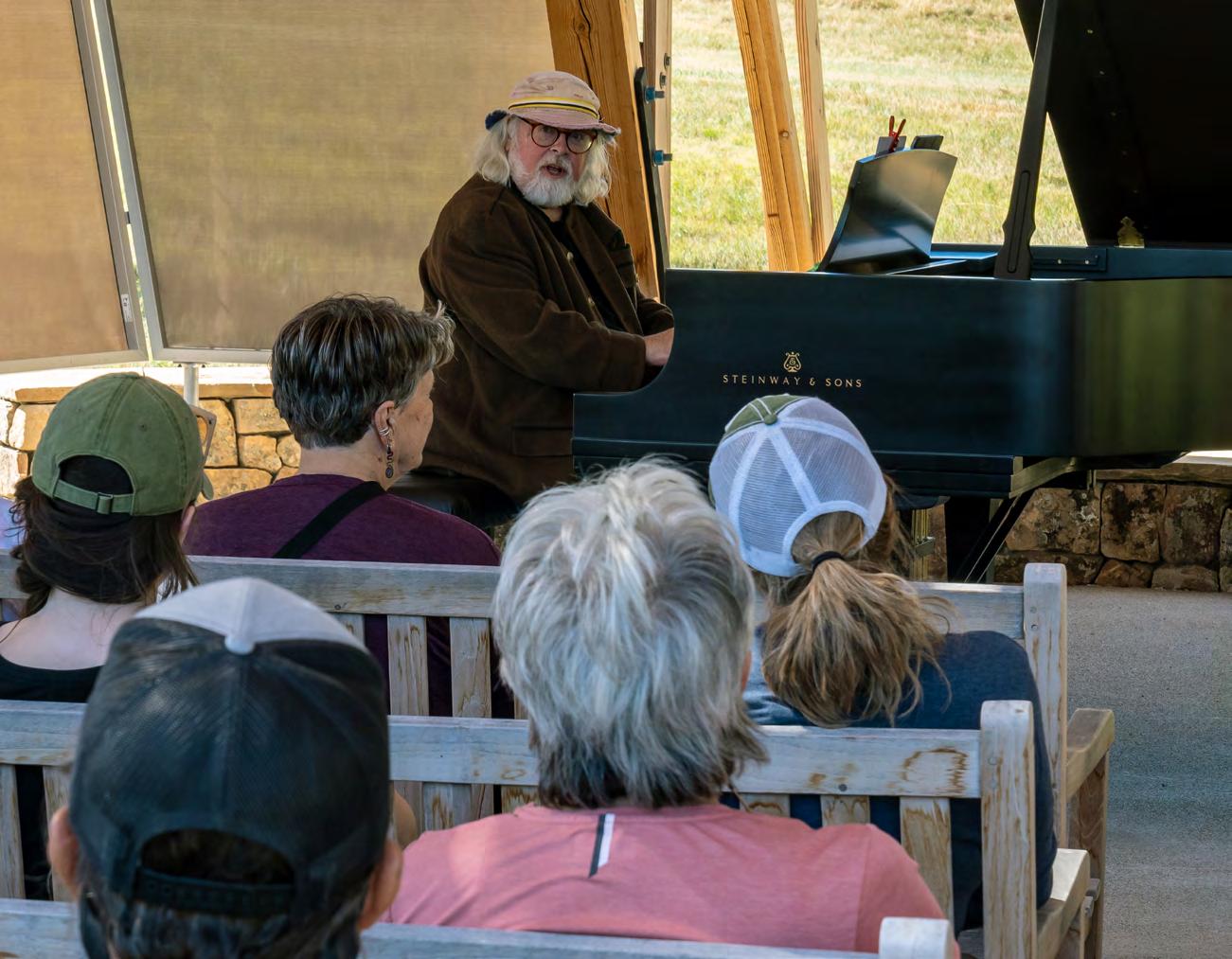

Four Pieces, Opus 305, 2021.
I Waltz
II Pastoral
III Serenade
IV Waltz of the Moment
Valentyn Silvestrov is Ukraine’s greatest living composer. Through the pianist Alexei Lubimov, who helped Silvestrov escape from Ukraine, our Artistic Advisor, Pedja Muzijevic, contacted Silvestrov’s daughter in 2022, who, along with her father, was delighted to allow us to commission the pieces he had just composed.
The loudest these pieces get is mezzo piano. Silvestrov’s dynamics ask that many of the notes be almost pointillistic, placed separately, out of the flow of the melody. Unusual features of the scores are the crescendos that link one very quiet group of two or three notes to the louder but still quiet group which follows, followed by an immediate decrescendo where the louder note quiets while it is still sounding. When a passage swells in volume to the middle of a note and then tapers off, notes can be lessened by backing off the pedal.
This happens dependably, often many times in a single measure, so these simple pieces are complex études in pedaling and diminuendo.
This is why Silvestrov takes his time with the tempo: the pieces aren’t so much about the notes as about the effects, the push and pull of sound they create, like rain starting and stopping in the night. It all happens, not in the explosive light of day, but in the shade, under the trees. Or in the dark, against the windowpane.
I’m reminded of Wilbur’s description of melting drops on leaves in his poem, “A Courtyard Thaw”: Their icy cerements decayed
To silken moistures, which began to slip
In glints and spangles down, and made
On every twig a bauble at the tip.

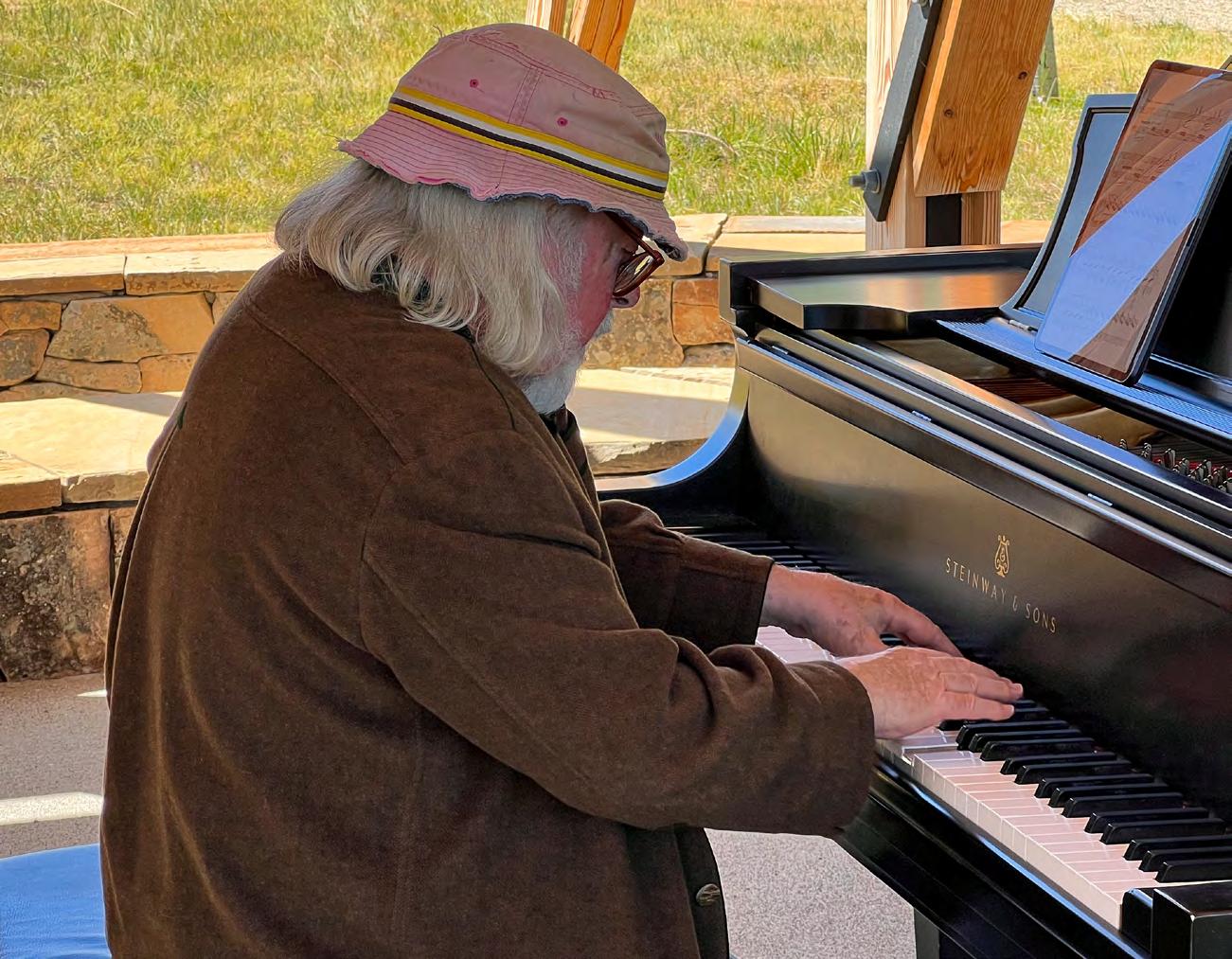
Debussy: Passepied. From Suite Bergamasque. 1890.
This is a dance from a lost age, from Brittany, an ancient, Celtic part of France. The passepied, where you pass your feet over each other, was popular in the court of Louis XIV and in earlier Breton courts. Lully, Rameau, Purcell, and Bach all wrote passepieds, as did Stravinsky and Prokofiev. It’s traditional to make it bouncy, but I think it gains dignity and poignancy when it’s slower. You can also hear it more easily.
Because a valley is narrow, like Murphy Canyon at Tippet Rise, does not mean that it is not deep. Or that it does not contain hidden wolven caves. That it does not attract eagles with a menu unavailable on the plainer plateaus.
As Reinhold Brinkmann writes in Late Idyll, Brahms’s music “conceals the unfathomable as the subterranean dimension of a seemingly secure composition.”
Brahms wrote monumental works because of the ghost of Beethoven looming over him. But once they were done, he consolidated all of his life into smaller valleys, into intermezzi, ballades, and capriccios.
Gunther Schuller wrote, “What Brahms was after was to create a tension, a tug of war, as it were, between the actual heard rhythm and phrase, and the underlying metric pulse.” As Alex Ross points out, though, “Brahms’s games around the beat are routinely smudged in performance and on recordings.”


Brahms’s A Major Intermezzo is one aspect of the composer: along with the mountain wanderer, the bon vivant, the austere prophet, is the pure Romantic, the ecstatic visionary, the infectious minstrel, whose great gift was to be able to put into music the twilight of the lyrical, idyllic, doomed Viennese era.
Brahms knew he was the last stand of everything he believed in. Rachmaninoff and Puccini were also successful in preserving worlds that no longer existed. These worlds were veiled in the noise of the street when they lived, but have become clarion after the fact, when so much else has fallen away.
The midsection contains Clara Schumann’s descending four-note theme, which she wrote as a teenager, and which both her husband Robert and her Platonic lover Johannes used to pay her, the greatest pianist and muse of her time, anguished homage.
Because of her, we have Brahms and Schumann. And her own wonderful compositions, 20 lieder and 30 piano works, including the wonderful F Minor Piano Concerto, written in the same year as her seminal four-note theme.
The story of Robert Schumann and Clara Wieck is the greatest love affair in classical music. Robert knew Clara when she was 11 years old. At that time she was already touring as a concert pianist. He studied piano with her father and lived in their house. He proposed to her when she turned 18, and she accepted. They had to sue her father (in court) for the right to marry.
Brahms, who moved into the Schumann house when he was 21, became their protégé. As Schumann went slowly insane, ultimately being confined to an asylum, Brahms and Clara fell in love, and pledged to spend their lives together. In photos from that time, Brahms had blond hair, worn long like Liszt’s, was quite handsome, and Clara was adorable.
When Schumann died, Brahms, however, ran away. His young years had been spent playing background music in bordellos, the darling of the courtesans. He could love only those women he didn’t sleep with. Part of him wrote sonatas, but other parts hung out in bars with small-minded dragueurs.
He spent the rest of his life atoning for his behavior, finally in his and Clara’s last years (she died in 1896, he in 1897) sending her pieces he called intermezzos, which used the Andantino theme from her
Romance variée, Op. 3, written when she was 14, in 1833, to create nostalgic fragments that epitomize, in the push-pull of their sprung rhythms and the hanging notes of their unresolved yearning, the frail must of the Habsburg Empire.
In the intermezzi, everything Brahms knew about music is condensed into simple statements, the labyrinths of the century distilled into pieces which are, as Arthur Rubinstein said of Mozart, too simple for children and too difficult for virtuosi.
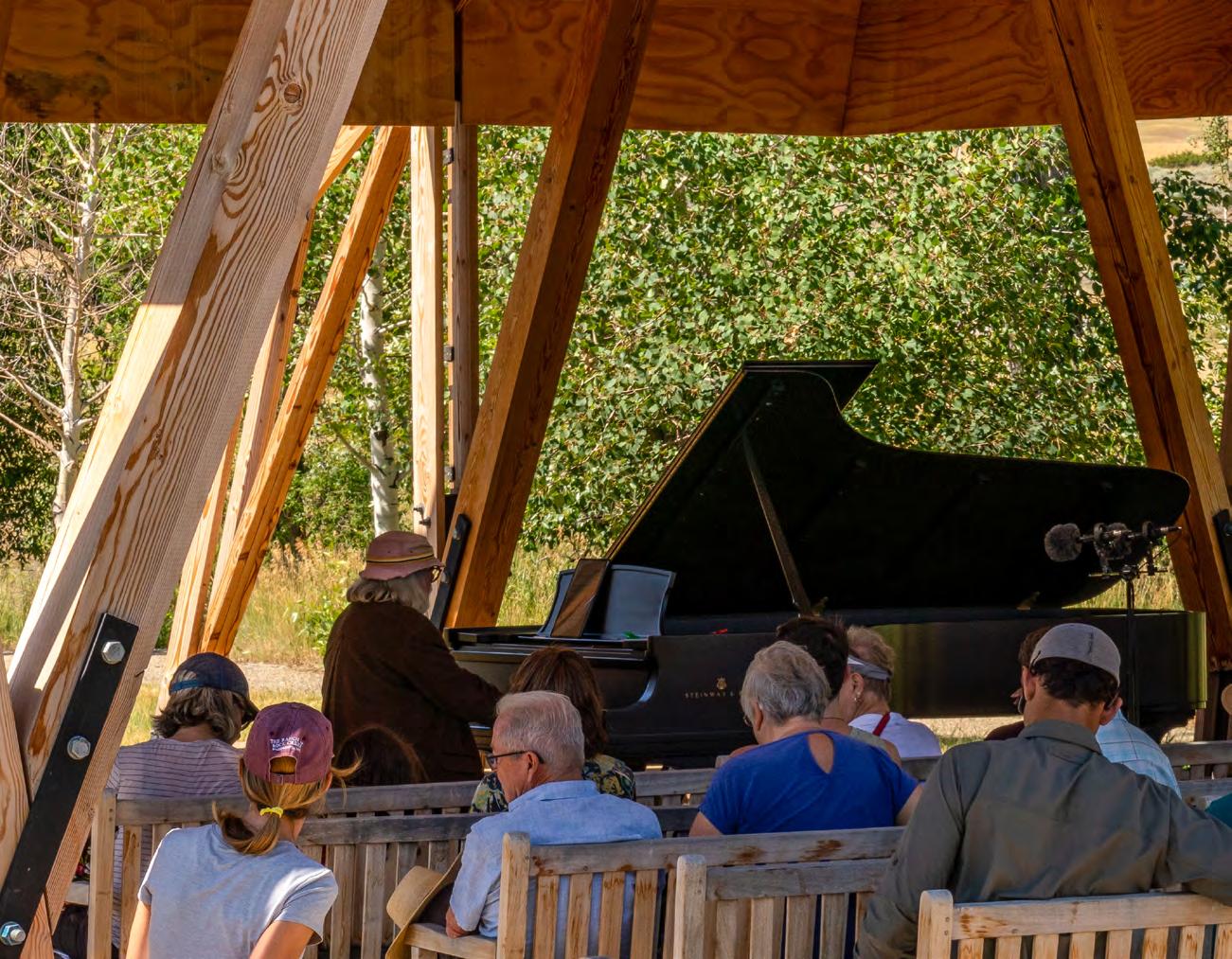
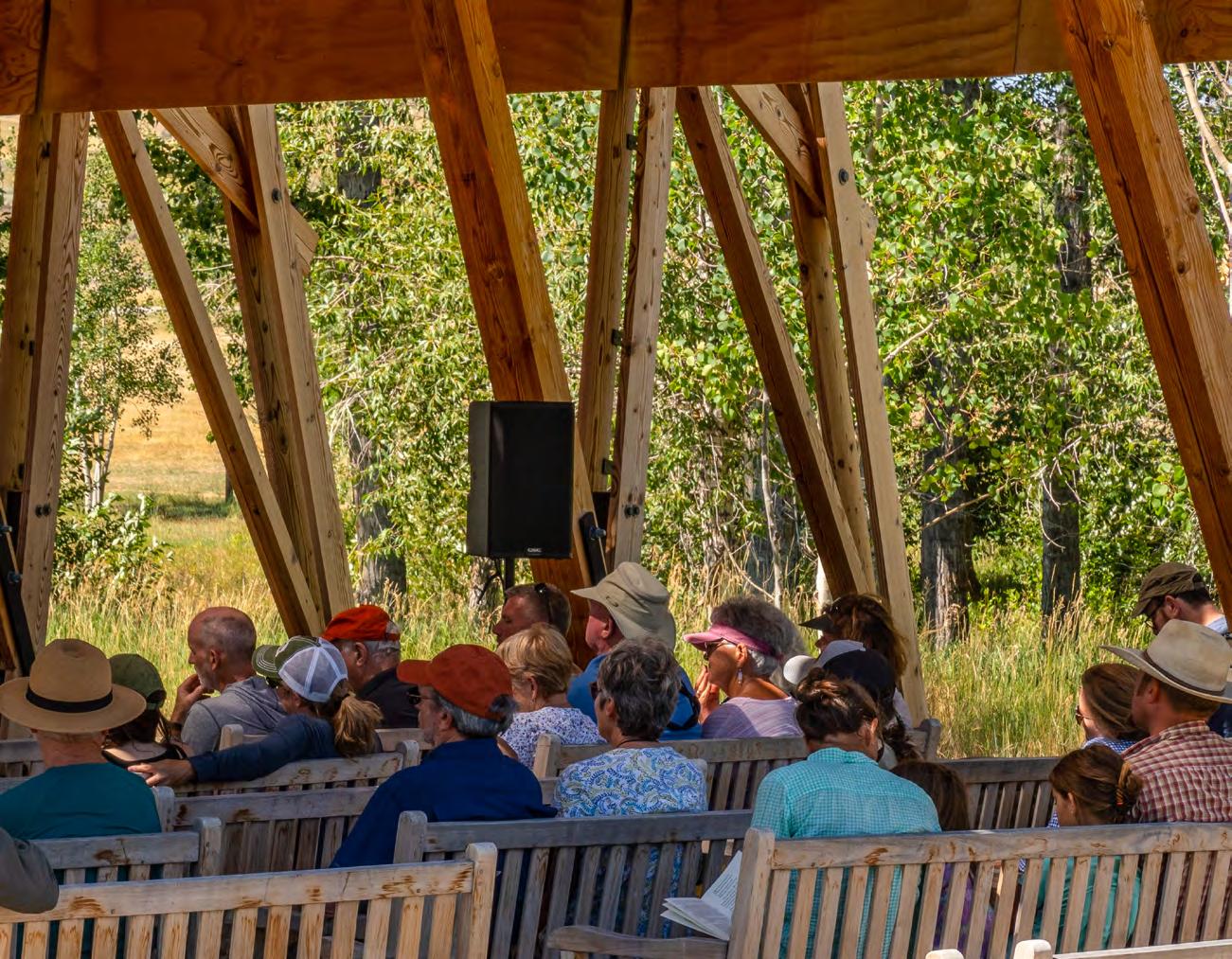 35
Peter Halstead
35
Peter Halstead

I rerecorded the concert in the Olivier Barn a month after the outdoor concert, on Véra, a nine-foot Hamburg Steinway, named for the wife of Vladimir Nabokov, whose touch can be felt throughout his writing. This has been documented in Stacy Schiff’s charming book Véra (Mrs. Vladimir Nabokov). So both Tia and Olivier, our grandchildren, conspired nominally in the concert for their grandmother.

Recorded September 13, 2022
Recording Engineers: Monte Nickles, assisted by Jim Ruberto
Sound Editor: Monte Nickles
Denoising: Jim Ruberto
Mixing and Mastering Engineer: Monte Nickles
Performer: Peter Halstead
Producer: Monte Nickles
Recorded in AURO-3D® for immersive playback in 32-bit 384kHz DXD format.
Microphones:
Main array:
Left, Right, Center, Surround L&R: DPA 4041a
Height: Front L & R, Rear L&R: DPA 4006a
Spot mics on Piano: Left, Right: DPA 4060
Left, Right: DPA 4006a
Microphone preamps: Grace Design M108
A/D Conversion: Merging Technology
HAPI and HORUS with Premium converter cards
DAW: Merging Technologies Pyramix

Click on the arrow on your chosen track and listen. Many computers after 2016 can play high-quality sound.

Your computer may not be able to read the chosen track. You can upgrade your sound by adding a converter and headphones (see the lists under FAQs).


1. Plug the items in: Computer + USB cable + converter + headphones.
2. Double-click on the TRACK you’d like to hear.

3. Go have lunch while it downloads. It could take five minutes to half an hour, depending on your internet speed.
4. You’ll see the ICON for the track in your downloads window. You can play it from there.
5. If it feels more convenient, drag it to your desktop.
6. Double-click the ICON. You might see a PLAYBACK WINDOW with controls to pause, stop, and play.
7. Figure out how to turn the sound up and down on your computer.
8. Put the SOUND down LOW.
9. Put on the headphones.
10. Push PLAY in the PLAYBACK WINDOW.
11. Turn up the sound until you hear the music comfortably, on both the converter and your computer.
(Note that you may have to turn up your computer’s sound in its PREFERENCES window in its SETTINGS.)
